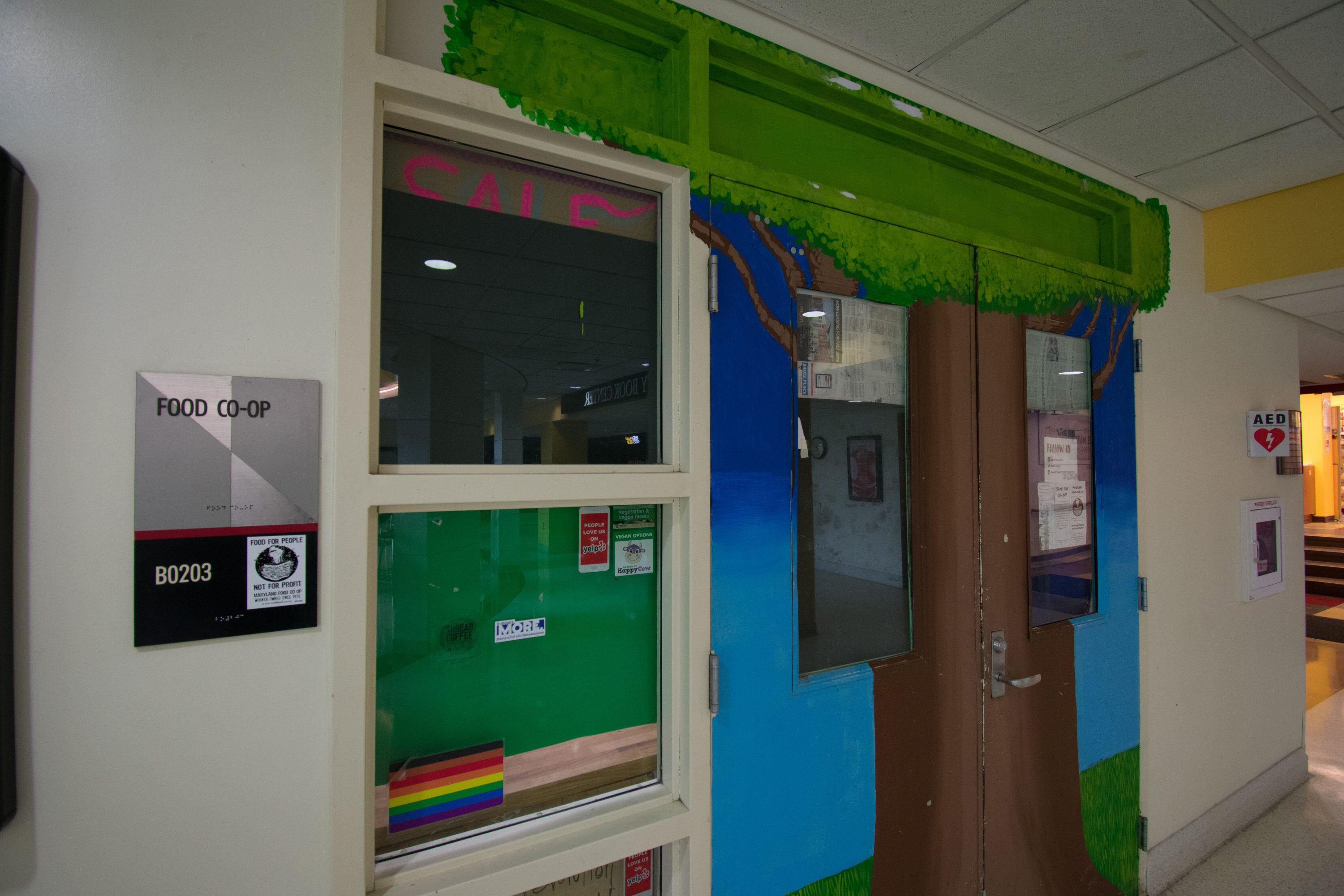Views expressed in opinion columns are the author’s own.
For the first time since 1975, students arriving at the University of Maryland won’t be able to experience one of this school’s historic institutions: the Maryland Food Co-op. Many returning to campus, especially former worker-owners like myself, feel the void left by the Co-op vacating its funky corner in the basement of Stamp Student Union.
While it will continue to exist in the memories of all who walked through its doors, the next generations will not realize that the Co-op is missing from the fabric of this campus. It is up to this university’s community to uphold the Co-op’s legacy and pass down some of the lessons we have learned.
The Co-op started in the 1970s because of an immediate need for healthy food on the campus. The main options were the dining halls, which had students rioting due to the low-quality food, said Co-op co-founder, Marc Strumpf, in a video from the shop’s 40th anniversary. Because students had to figure out how they were going to feed themselves, they began to coordinate bulk purchases from Glut Food Co-op in Mt. Rainer.
Workers from the ‘70s say this snowballed into a full-on movement of hundreds of students going to the “guerrilla sandwich line” on McKeldin Mall to enjoy fresh food and discuss culture and politics. As they built on the people power coming out of the momentum of the anti-war movement at this university, they successfully fought the university for a space in the student union building.
Thus the Maryland Food Co-op was born: a community-run sandwich shop and grocery run primarily by volunteers working for food credit.
This is a lesson about an advantage of cooperatives: They can meet the needs of communities where standard capitalist markets or state/university planning fail to do so. For 43 years, the Co-op met this need for healthy food on campus — a testament to its longevity, rather than evidence of the failure of co-op models as some have been saying.
So, why did the Co-op close? In short, access to food slowly expanded throughout campus and the Co-op failed to adapt to changing needs.
The dining halls, which now offer vegan-friendly options and recently committed to reducing this university’s “foodprint,” changed their model in 2016 to unlimited buffet access instead of a point system, effectively removing dining plan students from the on campus food market.
The food court in Stamp was constructed in the early 2000s — a significant change in on campus competition. This is doubly difficult because several restaurants take Dining Dollars, further pushing meal plan students away from the Co-op.
Not to mention the proliferation of restaurants and other food options now available off-campus, as well as a new hyper-competitive marketing landscape through social media.
The driving force behind the Co-op’s close was its struggle to pay rent to Stamp. A question the campus community should consider, however, is how this arrangement took shape.
Stamp is self-supported and funded by four sources: student fees, room rental revenue, rent from vendor tenants and other internal revenue-generating programs.
The university’s decision to have a landlord extracting money from students, organizations and vendors underlied the Co-op’s financial problems in the first place. Even if we aimed for our mantra — Food For People, Not For Profit — we still had to make Stamp money so it could pay its administration’s ever-increasing salaries.
This points to another lesson we should learn from the Co-op. Its politics were always front and center because the Co-op embodied “prefigurative politics”: attempting today to create models for the better society tomorrow.
This approach combines “means” and “ends,” putting our ideals into practice so we can experiment and improve on them over time. Valuably, it provides a map of what alternatives to the status quo — such as neoliberal capitalism — can look like and how we can get there.
Today’s students are coming of age in a period of intense crisis: climate change, extreme wealth, social inequality and ascendant totalitarian movements, among many existential threats. The question we find ourselves asking is: What can we do about it?
Answers are not going to fall from the sky. They are going to come from communities identifying our shared needs and desires — be it food, housing, clothing, energy, art or whatever else — and educating ourselves about how we can produce them for ourselves. The cooperative movement did not begin with the Maryland Food Co-op and it will not end with its closure.
Michael Brennan is a public policy graduate student. He can be reached at mryanbrennan@gmail.com.



